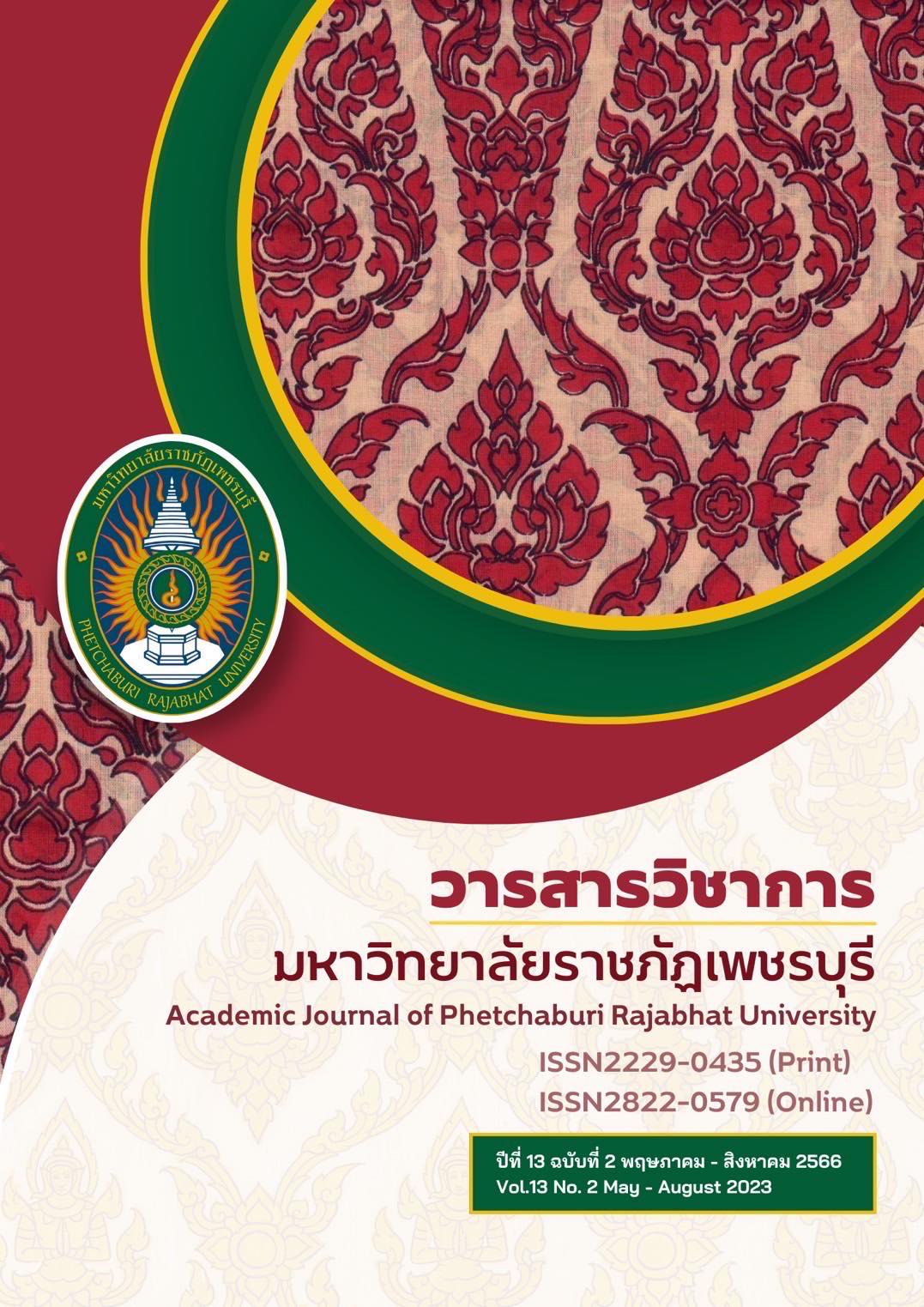ความคิดสร้างสรรค์: เกิดขึ้นเองหรือพัฒนาได้
Main Article Content
บทคัดย่อ
โลกปัจจุบัน มีการเปลี่ยนแปลงอย่างรวดเร็วจนยากที่จะคาดเดาได้ว่าในอีกหลายปีข้างหน้าจะเป็นอย่างไร การเปลี่ยนแปลงที่เกิดขึ้นส่งผลต่อวิถีการดำรงชีพและการเรียนรู้ ความรู้และทักษะอาชีพที่สอนกันในปัจจุบันอาจไม่เพียงพอต่อความท้าทายในอนาคต อีกทั้งพบว่า ความคิดสร้างสรรค์และจินตนาการโดยเฉพาะในกลุ่มเด็กเล็กลดลงอย่างต่อเนื่อง สหประชาชาติและองค์กรระหว่างประเทศ ได้เพิ่มการตระหนักและการรับรู้ถึงบทบาทของการสร้างสรรค์ในการแก้ปัญหา ความคิดสร้างสรรค์ เป็นทักษะสำคัญสำหรับพลเมืองแห่งศตวรรษที่ 21 ซึ่งช่วยให้มองปัญหาจากมุมมองที่แตกต่างจากวิธีการเดิม บทความนี้แสดงให้เห็นถึงความสำคัญและความจำเป็นของความคิดสร้างสรรค์ ปัจจัยที่ทำให้ศักยภาพการคิดสร้างสรรค์ของบุคคลแตกต่างกัน เช่น กรอบความคิด ความเชื่อในความสามารถ และแรงจูงใจในการสร้างสรรค์ ซึ่งมีผลต่อความสำเร็จด้านอื่นๆของชีวิต ระบบการศึกษาที่อาจสกัดกั้นการคิดอย่างสร้างสรรค์ของผู้เรียน ความคิดสร้างสรรค์สามารถพัฒนาได้และต้องใช้เวลาบ่มเพาะ จึงควรเริ่มต้นปลูกฝังตั้งแต่วัยเด็ก ครอบครัวและโรงเรียนมีบทบาทสำคัญในการส่งเสริมให้ผู้เรียนเกิดความคิดสร้างสรรค์
Article Details

อนุญาตภายใต้เงื่อนไข Creative Commons Attribution-NonCommercial-NoDerivatives 4.0 International License.
บทความนี้ยังไม่เคยลงตีพิมพ์ในวารสารใดมาก่อน และไม่อยู่ระหว่างการพิจารณาของวารสารอื่น
บทความที่ลงพิมพ์เป็นข้อคิดเห็น/แนวคิด/ทัศนคติของผู้เขียนเท่านั้น หากเกิดผลทางกฎหมายใดๆที่อาจ
เกิดขึ้นจากบทความนี้ ผู้เขียนจะเป็นผู้รับผิดชอบ และบทความนี้เป็นลิขสิทธิ์ของวารสารเท่านั้น
เอกสารอ้างอิง
Zhao Y. Catching up or leading the way: American education in the age of globalization. ASCD; 2009.
Bakhshi H, Downing J, Osborne M, Schneider P. The future of skills: Employment in 2030. London: Pearson & Nesta; 2017.
World Economic Forum. The future of jobs report 2020. [Internet]. 2020 [cited 2022 November 1] Available from https://www.weforum.org/reports/the-future-of-jobs-report-2020/in-full/infographics-e4e69e4de7
Dewey J. Experience and education. New York: Macmillan; 1938.
Craft A. The limits to creativity in education: dilemmas for the educator. Br J Educ Stud 2003; 51:113–27.
OECD. Thinking outside the box, [Internet]. 2022 [cited 2022 November 1] Available from https://www.oecd.org/pisa/
innovation/creative-thinking/
Robinson K. Out of our minds: Learning to be creative. John Wiley & Sons; 2011.
Torrance EP. Torrance tests of creative thinking. Lexington MA: Ginn & Co; 1974.
OECD. PISA 2021 Creative Thinking Strategic Advisory Group Report. [Internet]. 2017 [cited 2022 November 1] Available from https://one.oecd.org/document/EDU/PISA/GB(2017)19/en/pdf
Guilford JP. Creativity. The American Psychologist 1950; 14:444-54.
Robinson K., Aronica L. You, your child, and school: Navigate your way to the best education. Penguin; 2019.
Land G. Beth J. Breakpoint and Beyond: Mastering the Future Today. Harpercollins; 1992.
Fasko D. Education and Creativity, Creat Res J 2001; 13: 317-27.
Dweck CS. Mindset: The new psychology of success. New York: Random House; 2006.
Karwowski M, Czerwonka M, Lebuda I, Jankowska DM, Gajda A. Does thinking about Einstein make people entity theorists? Examining the malleability of creative mindsets. Psychol Aesthet Creat Arts 2020; 14:361–366.
Benedek M, Karstendiek M, Ceh SM, Grabner RH, Krammer G, Lebuda I, et al. Creativity myths: Prevalence and correlates of misconceptions on creativity. Pers Individ Dif 2021; 182:111068(1-10).
Bandura A. Self-Efficacy: The Exercise of Control. New York: W.H. Freeman; 1997.
Beghetto RA. Creative Self-Efficacy: Correlates in Middle and Secondary Students. Creat Res J 2006; 18:447-457.
Amabile T, Conti R, Coon H, Lazenby J, Herron M. Assessing the work environment for creativity. Acad Manage J 1996; 39:1154–1184.
Tierney P, Farmer SM. Creative self-efficacy: Its potential antecedents and relationship to creative performance. Acad Manage J 2002; 45:1137-1148.
MacKinnon DW. What makes a person creative? Theory into Practice 1966; 5:151-156.
Ryan RM, Deci EL. Intrinsic and extrinsic motivations: Classic definitions and new directions. Contem Educ Psychol 2000; 25:54-67.
Auger P, Woodman R. Creativity and Intrinsic Motivation: Exploring a Complex Relationship. J Appl Behav Sci 2016; 52:342–366.
Al-Zu’bi MAA, Omar-Fauzee MS, Kaur A. The relationship between creative thinking and motivation to learn creative thinking among pre-schoolers in Jordan. Eur J Educ Stud 2017; 3:426-442.
Rosen Y, Stoeffler K, Simmering V. Imagine: Design for creative thinking, learning, and assessment in schools. J Intell 2020; 8:16.
Pink DH. A whole new mind: Why right-brainers will rule the future. Penguin; 2006.
Resnick M. Lifelong kindergarten: Cultivating creativity through projects, passion, peers, and play. Cambridge MA: MIT Press; 2017.
Fletcher TS. Creative thinking in schools: Finding the “just right” challenge for students. Gifted Child Today 2011; 34:37-42.
Norman DA. Cognitive engineering and education. In D. T. Tuma & F. Reif (Eds.), Problem solving and education. Hillsdale: Erlbaum; 1980.
Zhao S, Zhao G, Wang Q. Teaching Thinking Directly-Construction and Practice of Thinking Skills Training Course. 2010 International Conference on Computational Intelligence and Software Engineering; December 2010; 1-4.
World Economic Forum. The global human capital report 2017. [Internet]. 2017 [cited 2022 November 1] Available from https://www3.weforum.org/docs/WEF_Global_Human_Capital_Report_2017.pdf
Strom RD, Strom PS. Changing the rules: Education for creative thinking. J Creat Behav 2002; 36:183-200.
Kahneman D. Thinking, Fast and Slow. New York: Farrar Straus Giroux; 2017.
Kim KH. The Creativity Crisis: The Decrease in Creative Thinking Scores on the Torrance Tests of Creative Thinking. Creat Res J 2011; 23:285-295.
Pagram P, Pagram J. Issues in e-learning: A Thai case study. Electron J Inf Syst Dev Ctries 2006; 26:1–8.
Tempelaar D, Rienties B, Giesbers B, Van der Loeff SS. How cultural and learning style differences impact students’ learning preferences in blended learning. In Transcultural blended learning and teaching in postsecondary education. IGI Global. pp 30-51;2013
Gunawan J. Understanding culture in higher education in Thailand. Educ Health 2016; 29:160-1.
Fayombo GA. Active learning: Creating excitement and enhancing learning in a changing environment of the 21st century. Mediterr J Soc Sci 2012; 3:107-28.
Bonwell CC. Using active learning to enhance lectures. Appl Econ Perspect Policy 1999; 21:542-50.
Kim KH. Creativity Crisis Update: America Follows Asia in Pursuing High Test Scores Over Learning. Roeper Review 2021: 43:21-41.
Runco MA, Acar S. Divergent thinking as an indicator of creative potential. Creat Res J 2012; 24:66-75.


